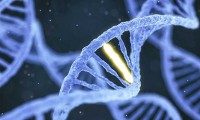-
Enzyme Replacement Improves CRISPR Gene Editing
- Source: FierceBiotech
- 1,027
- August 6, 2018
-
Gene Editing Control Using Amino Acids
- Source: FierceBiotech
- 1,020
- July 9, 2018
-
Heart Risk to be Detected by CRISPR
- Source: Fierce Biotech
- 902
- June 19, 2018
-
Using CRISPR to prevent hearing loss
- Source: fiercebiotech
- 764
- December 28, 2017
your submission has already been received.
OK
Subscribe
Please enter a valid Email address!
Submit
The most relevant industry news & insight will be sent to you every two weeks.








